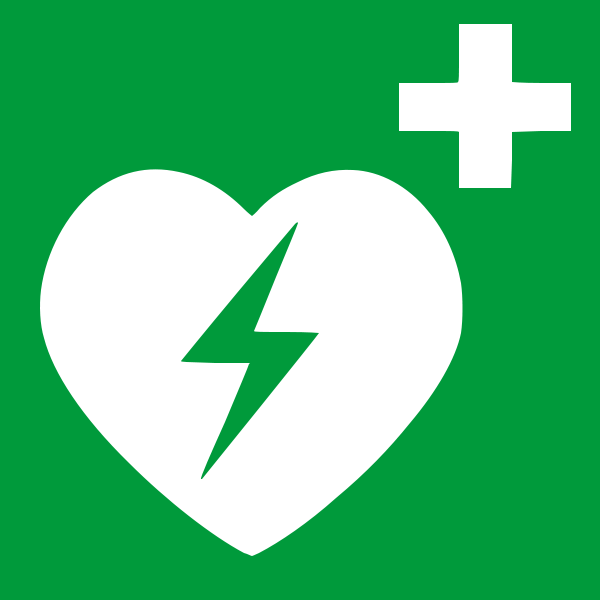As The Heart Beats, The Rules Change

Even if you think you’ve mastered all the rules of calculus in a previous semester, it is never a bad idea to go back to basics before taking a derivatives-loaded physics course. The same principle applies when it comes to lifesaving basics. However, the difference lies in the stakes: losing track of the cardiopulmonary resuscitation (CPR) norms might cost more than some marks on a Waves test.
A first-year health science student explains how anxious she was at first when she registered for the Dawson First Response Team. “I had done qualifications in the past, but I felt like it was a good idea to get a fresh start before getting involved. It makes me feel more confident to consolidate my learning.”
Saving lives is a matter of continual education. Research evolves at a certain pace, and the rules to follow during CPR procedures are often modified to ensure maximal efficiency. Once you have assimilated the rules, it can be hard to keep track of the new recommendations and to change the reflexes that have been developed in the past. The most common mnemonic to remember when you find a non-breathing victim used to be ABC--Airway-Breathing-Compressions--referring to, in order, the body systems you need to attend to as a rescuer. Now, the CAB procedure is recommended by the American Heart Association. Therefore, compressions should be done before opening the airway and performing the “mouth-to-mouth”.
The first thing to do if an unconscious victim comes along is to contact the emergency services (911). It is preferable to ask another person to do this step so that the rescuer can begin CPR as fast as possible. Before compressing, pinching the trapezius muscle (going down from the back of the neck) and urging vocally the victim to wake up are two ways to make sure he or she is actually unconscious. Chest compressions and mouth-to-mouth can then be performed in a ratio of 30:2 (30 compressions, 2 breaths). To start the compressions, it is necessary to position the heel of the hand along the middle of the sternum and to intertwine the ten fingers. The chest should go down around 1.5 inches for babies and 2 inches for children and adults, at a pace of one hundred compressions per minute. The following steps are mainly for trained responders, considering the techniques involved. The chin has to be lifted to open the airways, and a mask has to be positioned on the victim’s face to give the 2 breaths in a safe way for the person who gives them. The cycles have to be repeated until the arrival of the ambulance.
Ideally, the CPR training should be taken again once the qualification expires. This feeling is shared by many, as memory has a tendency to fade away with time. There are many opportunities to get a formal training in First Aid procedures, including one held at Dawson every semester for the First Response Team. For those who wish to go deeper in their training, it is also possible to take an Automated External Defibrillator (AED) course, which teaches how to operate such a device. AEDs are available in many public places and turn out to be one of the most important tools to save a life. You can never have too much knowledge!


Comments
Drifa Bellache
March 4, 2012It’s a nicely written article Christopher. You must have given a lot of thought to your comparaisons and to what you were going to say. Thank you for refreshing my memory on CPR 😊
Sara Tomaszewski
March 19, 2012As an aspiring doctor, I believe that CPR is a crucial lifesaving skill and that everyone should follow this training. I totally agree with your claim that we should refresh our knowledge of CPR, since science is a continuous process; the CPR rules are constantly improved as the medical community reaches unanimity on this matter. Your article is very well written and your nice comparisons help reinforce your ideas.
Recently, I came across some very striking statistics about heart diseases on the emedicinehealth website. Heart issues are said to be the main factor leading to death in the USA. Apparently, half of all the heart attacks and other heart-related complications occur unexpectedly in everyday life situations! The magnitude of this problem should not be underestimated, and it is great you raised this topic.
kennipod
April 26, 2012Chris,
I enjoyed reading this article. I have been certified for First Aid and CPR training Level C since this past June. I worked in a sleep away camp last summer where a lot of the campers came to me like the “medic” of my group. Although I did not have to do any CPR and ABC’s , I felt the training I got from the course I got was great to have and a great asset. CPR and First Aid training is important to have as one can face a case of it every day. As someone who joined the First Responder’s Team at Dawson, last month, I dealt with numerous cases (mostly minor ones). Although I am not going into sciences later on, I feel that having this training has allowed me to be more open and helpful with people in need.
This was an interesting article as it was not only informative, but a reminder of the proper steps to take if you encounter someone unconscious. Very well written.
You have to be registered and logged in in order to post comments!